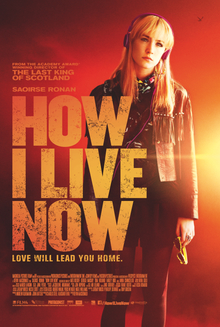The art of photography and camerawork in film-making. The cinematographer is in charge of the camera, electric and grip departments.
- Before digital technology, films would be in black an white, through advances, the creators would hand colour them after the production process.
- This process has been revolutionized withe the use of digital technology whereby filmmakers can film using a camera and the picture is colored even before the post-production stage. Then they are able to use editing software and enhance aspects of the colour such as the saturation.
- The types of digital technology includes;
- Cinema technique eg, the way the camera is positioned
- Image sensor and film stock
- Filters
- Lens
- Lighting and camera movement
- These digital technologies have revolutionized the way that filmmakers create and shoot their films. For example, they now use tripods to hold the camera steady and they can now use lenses to add different lighting and tones of colour to the film. This then allows them to create modern day films that interest viewers.
- This new media technology had now impacted audiences by being able to create films that are modern and developed which interests them more. Also, the colour of a scene helps the audience feel how the director wants them to. For example, having a contrast of blue over the scene creates a sad effect while red could reflect anger.
Sound
Sound refers to everything the audience hear in a film. This can include non-diegetic sound ( what has normally been put in during the editing process such as voice overs, mood music and some sound effects) or diegetic sound ( what is part of the scene such as voices, sounds of objects within the scene, ect.). Sound can be used to heighten the mood, provide information about the environment and much more.
- Before the advancement of digital technology, the majority of films would be mute and if there was dialog, it would be written and shown on the screen, they would also have music over the film to represent the tone of the film. For example, up beat tempo if it was funny.
- This process has been revolutionized by allowing filmmakers to create films with dialog, diegetic and non diegetic sounds before the post -production stage.
- The types of digital technology includes;
- Microphones
- recordings of non - diegetic sounds
- editing software
- These digital technologies have revolutionized the way in which filmmakers create films. For example, they can now edit sounds onto films to make them more realistic and interesting such as gun sounds.
- Through the use of digital technology, audience members become more engaged in the film due to the high quality sound which keeps them interested and as the quality of these sounds can be transferred to home exhibitions, audiences can enjoy them for a long lasting time.
Editing
Editing in a film is part of the post-production process. It involves the use of digital technology to create the final form of the film that is ready to be exhibited.
- Before digital technology, films were edited though a process called Analogue editing, once the filming process was completed, it was cut down and pasted into an order, it then went though a machine such as a K.E.M.
- This process has been revolutionized by making it quicker to edit a film. It can now also be done in a variety of ways at different times while continuity is still achieved.
- The types of digital technology include;
- computers/laptops
- the use of many cameras at once
- software
- For institutions, the revolutionized digital technology has allowed them to edit efficiently and quickly as well as doing it a range of ways to create the perfect outcome.
- For audiences, the development of editing has created a range of different types of films. For example, short films which keeps audiences interested while appealing to a wider range.
Special effects and Graphics
Special effects also occur at the post -production stage whereby the editors insert the special effects using modern digital technology.
- When creating special effects and graphics before digital technology, filmmakers would use still images within the film to create illusions. Also, in the animation area, special effects and graphics would be created by drawings.
- This process has been revolutionized with the use of digital technology. For example, the use of CGI in the creation of photo realistic images, characters, settings and objects. Images can now be created on a computer using the techniques of animated cartoons and model animation.
- The types of digital technology include;
- Green screens
- software to create animations
- morphing effects
- stop and go motion
- With the development of these digital technologies, institutions can now create a range of film genres, for example, syfi and animation. This allows them to appeal to a range of audiences and create films of good quality
- For audiences, the development of digital technology in this area allows them to watch a range of films that are of good quality.


